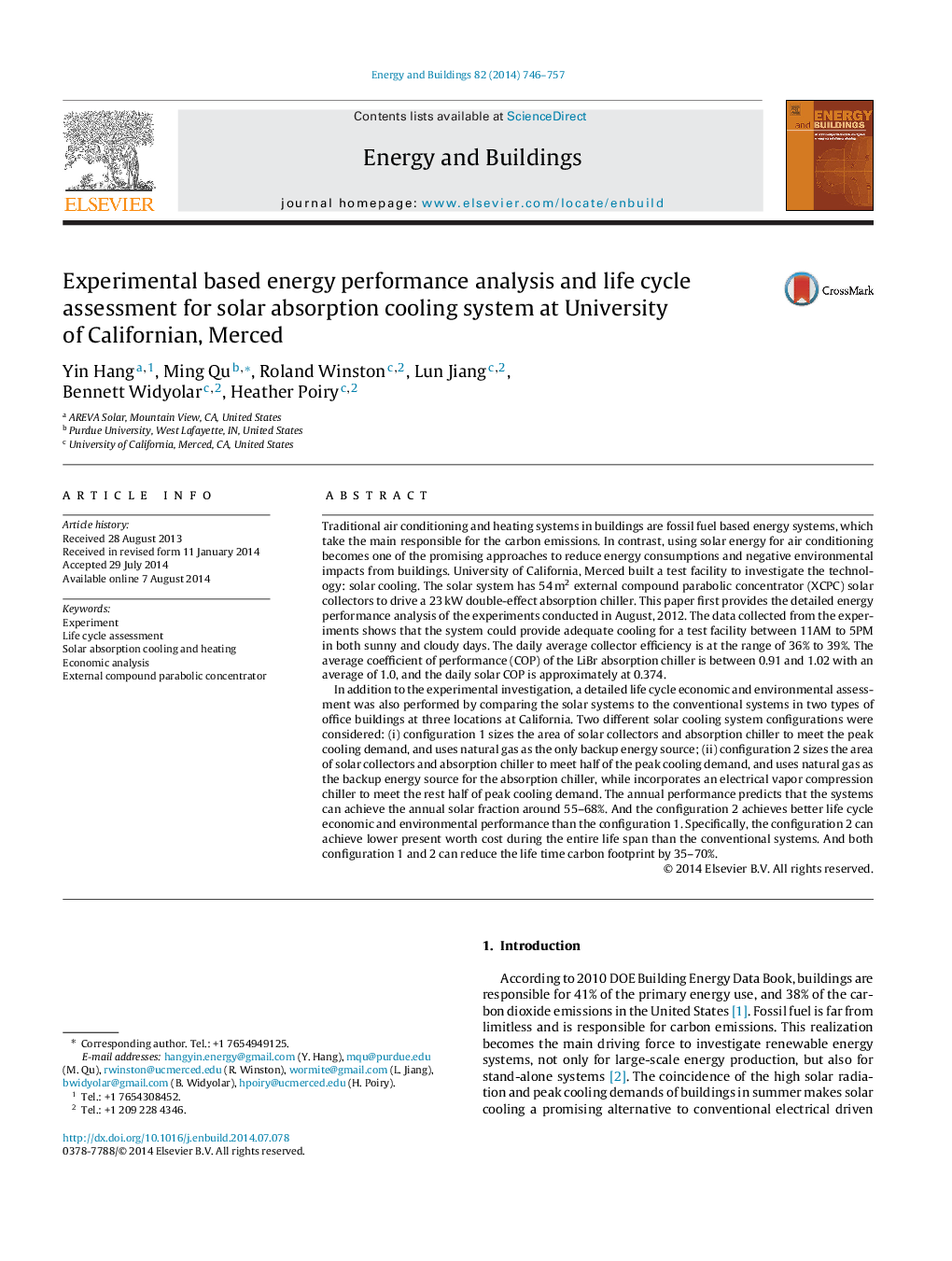| کد مقاله | کد نشریه | سال انتشار | مقاله انگلیسی | نسخه تمام متن |
|---|---|---|---|---|
| 262712 | 504047 | 2014 | 12 صفحه PDF | دانلود رایگان |
• A double-effect solar absorption cooling test facility was built.
• The experimental-based energy performance of the system is investigated.
• A life cycle economic and environmental assessment was performed.
Traditional air conditioning and heating systems in buildings are fossil fuel based energy systems, which take the main responsible for the carbon emissions. In contrast, using solar energy for air conditioning becomes one of the promising approaches to reduce energy consumptions and negative environmental impacts from buildings. University of California, Merced built a test facility to investigate the technology: solar cooling. The solar system has 54 m2 external compound parabolic concentrator (XCPC) solar collectors to drive a 23 kW double-effect absorption chiller. This paper first provides the detailed energy performance analysis of the experiments conducted in August, 2012. The data collected from the experiments shows that the system could provide adequate cooling for a test facility between 11AM to 5PM in both sunny and cloudy days. The daily average collector efficiency is at the range of 36% to 39%. The average coefficient of performance (COP) of the LiBr absorption chiller is between 0.91 and 1.02 with an average of 1.0, and the daily solar COP is approximately at 0.374.In addition to the experimental investigation, a detailed life cycle economic and environmental assessment was also performed by comparing the solar systems to the conventional systems in two types of office buildings at three locations at California. Two different solar cooling system configurations were considered: (i) configuration 1 sizes the area of solar collectors and absorption chiller to meet the peak cooling demand, and uses natural gas as the only backup energy source; (ii) configuration 2 sizes the area of solar collectors and absorption chiller to meet half of the peak cooling demand, and uses natural gas as the backup energy source for the absorption chiller, while incorporates an electrical vapor compression chiller to meet the rest half of peak cooling demand. The annual performance predicts that the systems can achieve the annual solar fraction around 55–68%. And the configuration 2 achieves better life cycle economic and environmental performance than the configuration 1. Specifically, the configuration 2 can achieve lower present worth cost during the entire life span than the conventional systems. And both configuration 1 and 2 can reduce the life time carbon footprint by 35–70%.
Journal: Energy and Buildings - Volume 82, October 2014, Pages 746–757
